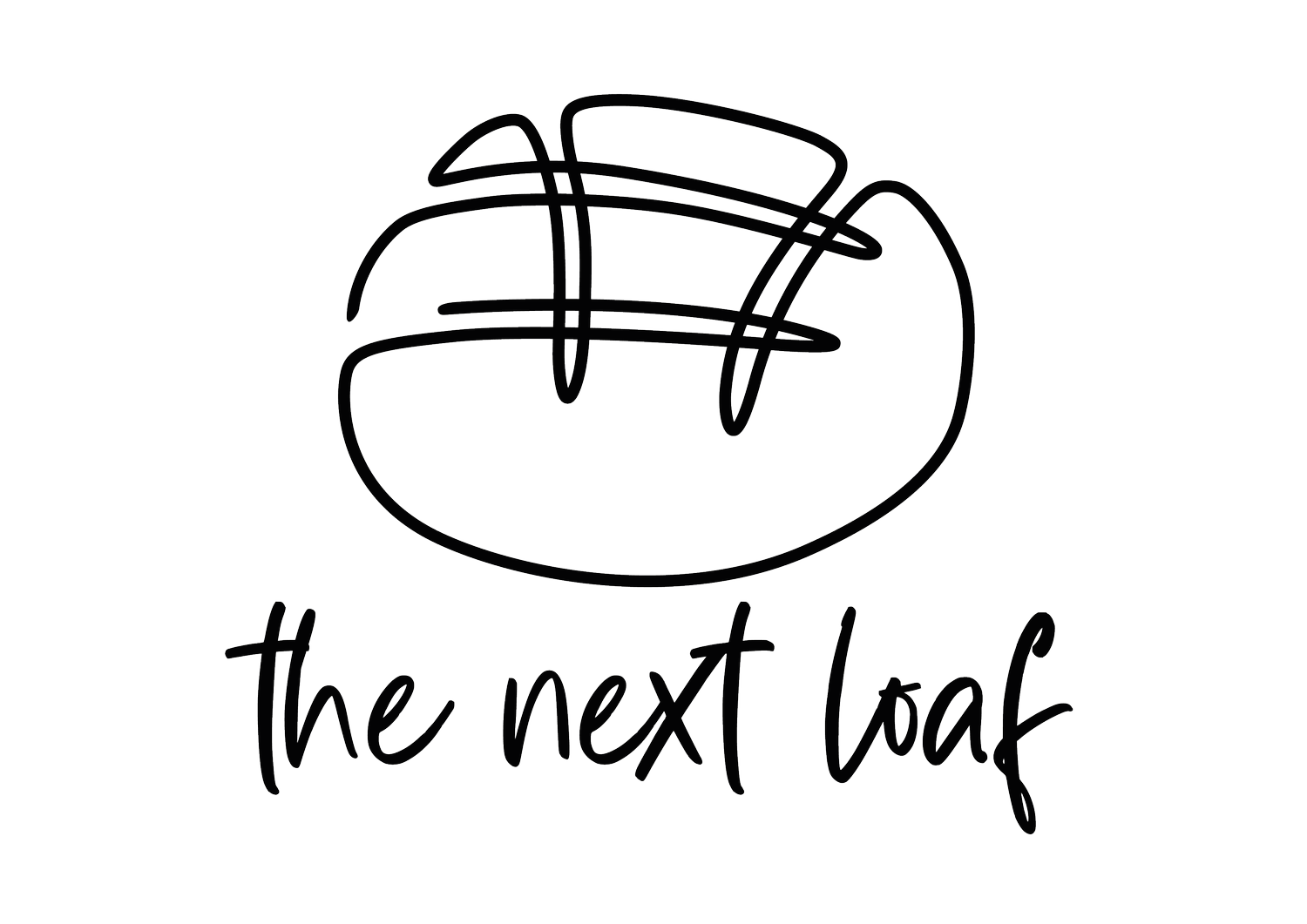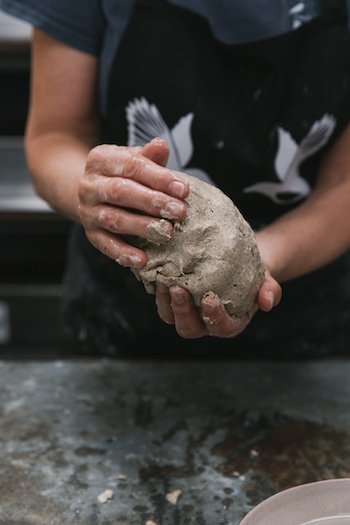THE FIRST LOAF
Welcome to my baking blog.
I’m Rebecca, a bit of a baking geek and most definitely a sourdough nerd. Over the coming months I’ll be taking you through some baking tips and tricks and sharing some of my favourite recipes. It’ll be mainly bread based, with a leaning towards sourdough, though I’m sure they’ll be the occasional ‘current obsession’ thrown in for good measure.
My baking life
I'm never happier than when my hands are stuck in something messy. I'm a do-er and have made my way through life by working out how to make things from scratch. When, in my mid-40s, I started combining flour and water to make sourdough bread, it was simply a progression of that ethos.
My bread making prior to this had been an occasional foray into yeasted breads using classic recipes from authors such as Elizabeth David with mixed results but whilst small children were underfoot my baking tended to centre around school bake sales (crispy cake anyone?) and birthday cakes. Reader, I must confess, my children’s go-to option was a chocolate sponge cake that I ‘carved’ into a hedgehog shape, slathered in chocolate buttercream then pierced all over with chocolate matchmakers. It was popular with the under 10’s but that’s about the best that can be said.
Years later, I read an article about sourdough and ‘wild yeast’ and my interest was immediately piqued. It sounded tricky. Though there seemed to be some scientific jargon to take on board there was also that indefinable whiff of a craft that required commitment, passion and a forensic approach to intelligence gathering. At this point in my life it was right up my street and I was hooked from the moment the first tiny fermentation bubbles appeared in my pot of floury goo!
I tried to make sourdough bread for a number of years without really understanding what I was dealing with and now see this had a big impact on my success rate. With that in mind, I’m going to share some of the knowledge that has helped me become a better, more ‘thinking baker’.
Classic wheat sourdough loaf
Photo India Hobson
Why wild yeast?
Yeasts are single celled microscopic fungi that reproduce by budding and excrete carbon dioxide as they feed. Prior to 1846, when scientists figured out how to chemically synthesise yeast, all bread was leavened with wild yeast. Its naturally present in the air we breathe and has been around as long as we have - it’s the way our ancient ancestors would have made bread. It really was, the first loaf.
Sourdough bread is leavened with a wild yeast culture which we, the bakers, maintain with regular feeding and temperature control. To get started you’ll need to be ‘gifted’ some leftover culture from a friend, buy some dehydrated sourdough culture here or be willing to make a slurry of flour and water and follow a schedule of feeding and discarding until natural fermentation takes its course.
Chemical yeast was specifically developed in 1864 to make bread quickly and reliably with greater tolerance of time and temperature- it’s very forgiving. In contrast, wild yeast lives in the atmosphere - not in a sachet. Wild yeasts respond slowly as leavening agents and require regular sustenance in the form of flour, careful attention to detail and are highly sensitive to environmental conditions. My moniker, 'the next loaf', takes the baking journey as inspiration because the changing conditions of each bake mean the possibilities for adapting (and perfecting) ‘the next loaf' using wild yeast are limitless.
What’s so great about sourdough?
Have you ever noticed how ‘slow’ things taste better, especially when they have a cold period? The chocolate chip cookie dough that you’ve resisted the temptation to snack on as its flavour ‘ripens’ in your fridge, or the leftover curry that tastes so much better the next day and, of course, that loaf of sourdough bread you’ve slowly cold fermented overnight.
In 1961 the Chorleywood bread process was developed by a group of scientists in (you guessed it) Chorleywood, England. The development of the ‘no-time’ dough system (as little as 3 hours from sack to bag) involved the use of high- speed mixers, double the amount of manufactured yeast, artificial additives, preservatives and ‘improvers’. It quickly (no pun intended) became the go-to method for large-scale production bread baking. Mass produced, indigestible sliced loaves replaced our old ways. Around the same time many of us also started to feel that gluten was the enemy as we struggled to enjoy our daily bread.
Ripe sourdough culture ready for bread making.
Here’s Arby, my sourdough culture. Arby lives in the fridge most of the time, unless I’m going through a particularly intense bout of making bread (then I keep him ambient - feeding and refreshing him every day). When your culture is active and ready for action it’ll more than double in size during a 12 hour period, as you can see in this time lapse. You can almost see the yeasts feeding frenzy as the culture expands with gas and forces the lid upwards on the Mason jar. As you can see I use the metal lid on the jar without screwing it down with the outer ring - this means it can expand safely without danger of explosion!
Building a sourdough culture from scratch using flour and water is totally do-able but it can be time consuming consuming process and slightly unpredictable. More on this in future posts.
Want a piece of the Arby action??
If you’re inspired to make sourdough bread and want to get started without delay, click on the video. I’ll send you a portion of Arby (dehydrated) and you could be making bread within 3 days of receipt.
And yet……
Somewhere along the line we basically ‘threw the baby out with the bath water’, so to speak, and forgot how slow, considered food is more satisfying to make, more nourishing for our bodies and actually tastes much better.
Here’s the takeaway:
Wild yeasts = slow bread.
Slow bread = digestible bread.
Slow bread = great flavoured bread.
Happy baking!



